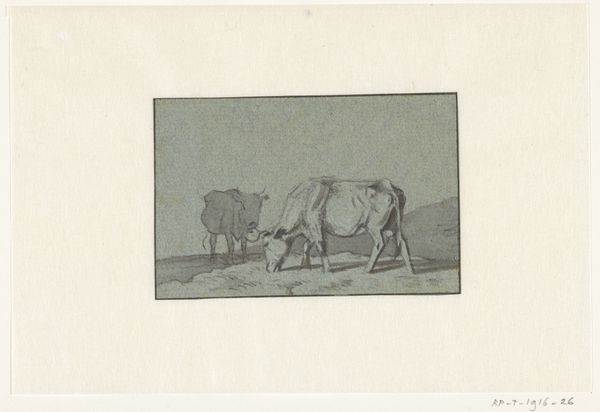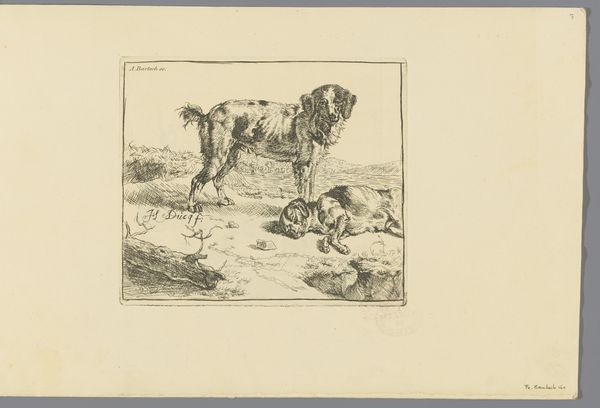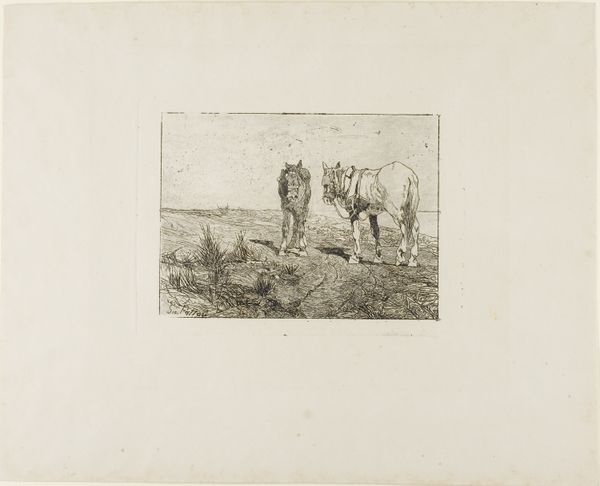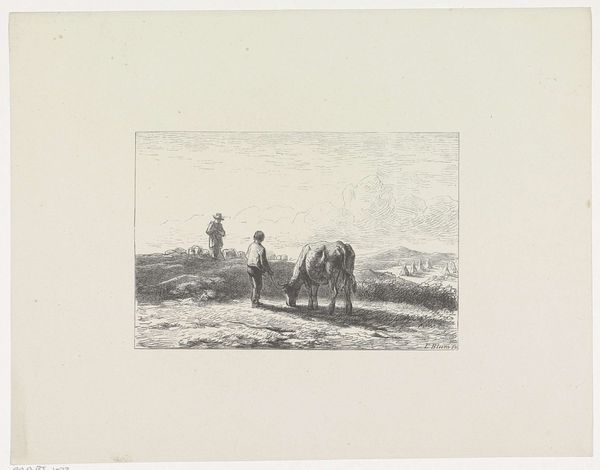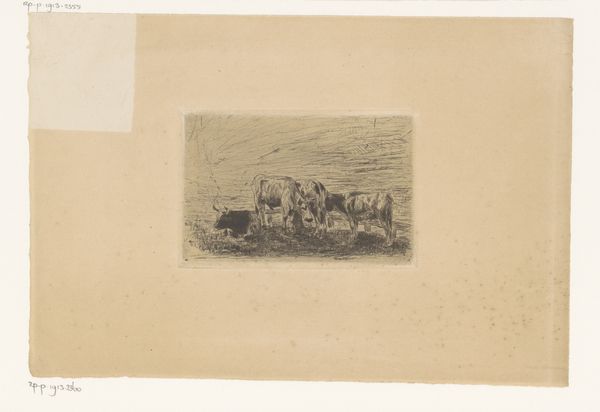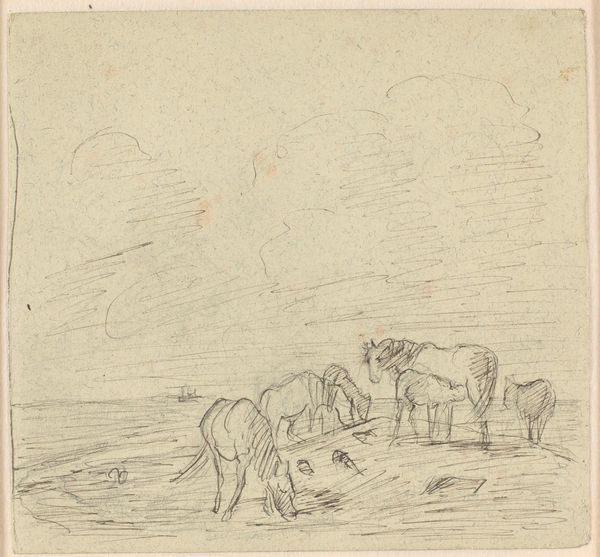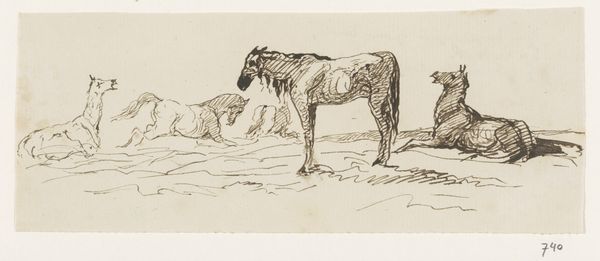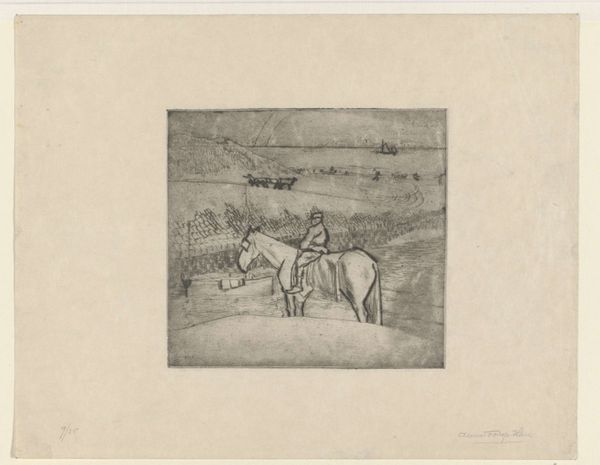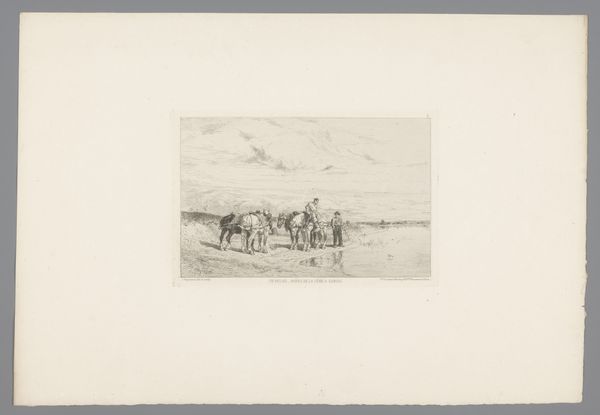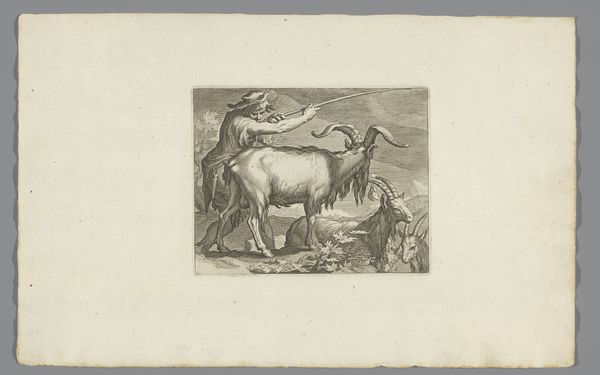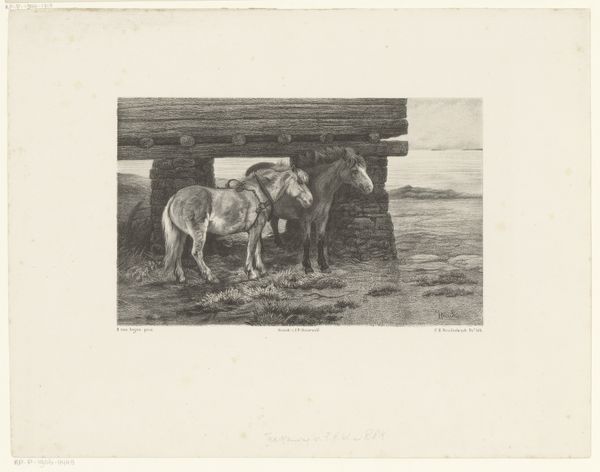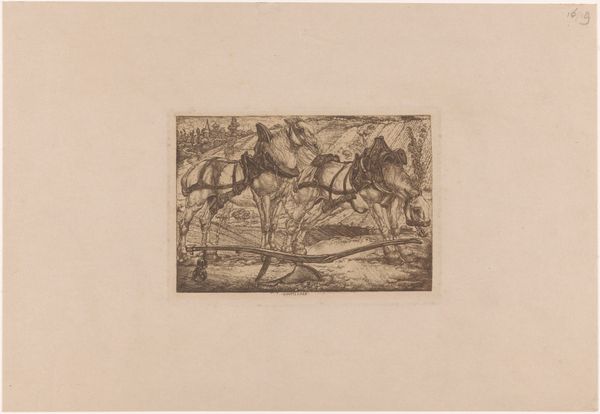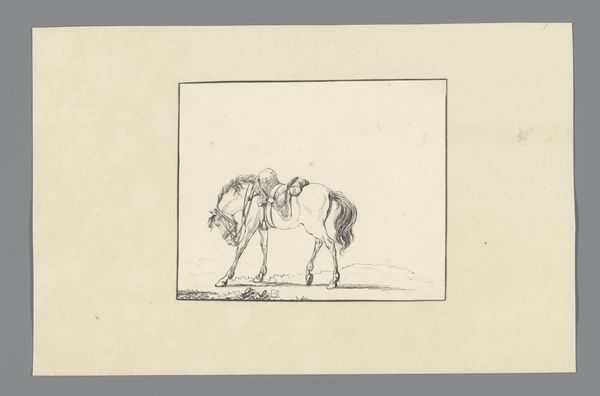
drawing, graphite, charcoal
#
drawing
#
landscape
#
figuration
#
graphite
#
genre-painting
#
charcoal
#
realism
Dimensions: height 74 mm, width 111 mm
Copyright: Rijks Museum: Open Domain
Editor: This is "Grazende koe met herder" or "Grazing cow with shepherd," a drawing by Wouter Johannes van Troostwijk, made somewhere between 1792 and 1810, using graphite and charcoal. The tones are very muted. It’s a simple scene, but… what do you see in it? Curator: I see more than just a pastoral scene; I see a reflection of social and economic realities of the time. Genre paintings like these can often be seen as idealized, but let's consider the labour involved. Where is the shepherd's family? What is the historical reality behind representing agricultural labor so simply? How might contemporary viewers interpret the representation of rural labor and its relationship to social class and land ownership? Editor: That's a different perspective than I was expecting. I was focused on the simplicity and naturalism. You’re making me think about who *isn't* in the picture, too. Curator: Exactly. Consider the historical context: This drawing emerges during a time of significant social and political upheaval. We have to question whose narratives are being prioritized, and what social function the piece might have been intended to serve. How can we use this work to have conversations about power? Editor: So, the drawing becomes a point of departure for understanding broader issues? Curator: Precisely! By examining the visual language and the historical context, we can analyze art not just aesthetically, but as cultural and historical artifacts reflecting and shaping societal narratives. This helps us critically consider the past. Editor: Wow, I've definitely gained a new appreciation for considering artwork in their broader context. It sounds obvious but there’s always much more to these than I initially consider. Curator: And that, ultimately, is the power of art history, as a tool for understanding the complexities of society.
Comments
No comments
Be the first to comment and join the conversation on the ultimate creative platform.
